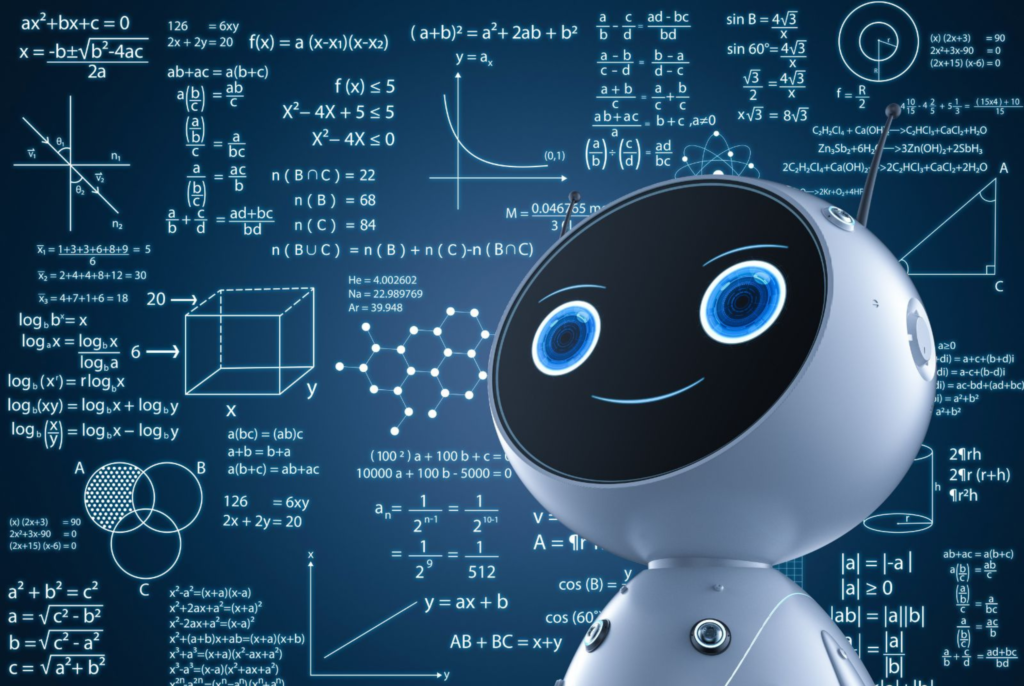Machine Learning (ML) has revolutionized the way we analyze data, make predictions, and automate decisions. These algorithms are found everywhere around us; from the social media recommendations to facial recognition in our phones, everything is ML based. At the core of these advanced algorithms lies a robust foundation of mathematical concepts as follows:
Linear Algebra
Linear algebra is fundamental to ML. It deals with vectors and matrices, which are used to represent data and perform operations on it.
In ML, each data point can be represented as a vector in a multi-dimensional space. For example, an image can be represented as a vector of pixel values. These collections of vectors form matrices, allowing for the manipulation of datasets. Operations such as matrix multiplication are crucial for transforming data and applying algorithms.
Calculus
Calculus plays a vital role in the optimization of ML models. It helps us minimize or maximize functions that represent our model’s performance.
Gradient descent, an optimization algorithm, uses derivatives to find the minimum of a function. This algorithm is extremely important in ML as we often want to minimize the loss function, which measures the difference between predicted and actual values. Gradient descent iteratively adjusts model parameters to converge on the optimal solution.
Similarly , backpropagation(used in neural networks) uses calculus to calculate the gradient of the loss function with respect to each weight by applying the chain rule. This process allows the network to learn from errors and improve accuracy.
Probability and Statistics
Many concepts of statistics and probability are used in ML. For example, Bayesian Inference, a statistical method that updates the probability of a hypothesis as more evidence becomes available, is used to model uncertainty in ML. Understanding different probability distributions (e.g., Gaussian, Bernoulli) is crucial for various algorithms, such as Gaussian Naive Bayes, which assumes a Gaussian distribution for features. Also, statistical tests help determine whether our findings are statistically significant, which is critical for validating models and ensuring reliable predictions.
Optimization Techniques
Beyond basic calculus, many other advanced optimization techniques are also used in ML.
Techniques like Lasso and Ridge regression utilize convex optimization to prevent overfitting.Not only these techniques, many other ML problems can be framed as convex optimization problems, where any local minimum is a global minimum.
Another optimization technique is Stochastic Gradient Descent (SGD). Unlike standard gradient descent, which computes gradients on the entire dataset, SGD updates weights using a small random sample. This approach improves efficiency, especially with large datasets.
Information Theory
Lastly, for quantifying uncertainty and making informed decisions, information theory is used in algorithms. We use entropy (measure of randomness) in algorithms like Decision Trees to determine the best splits based on the information gain. In classification problems, cross-entropy loss is used to measure the difference between two probability distributions, guiding the model’s learning process.

The intricate relationship between mathematics and ML is undeniable. By appreciating the mathematics behind the algorithms, we can better navigate the challenges of ML and harness its full potential. Understanding the underlying mathematical concepts not only enhances our ability to build effective models but also deepens our insight into how these algorithms work. As ML continues to evolve, a solid grasp of these mathematical foundations will empower data scientists and practitioners to innovate and solve complex problems in various fields.
Whether you’re a beginner or an experienced practitioner, revisiting these mathematical principles can provide a fresh perspective on your work in machine learning.

